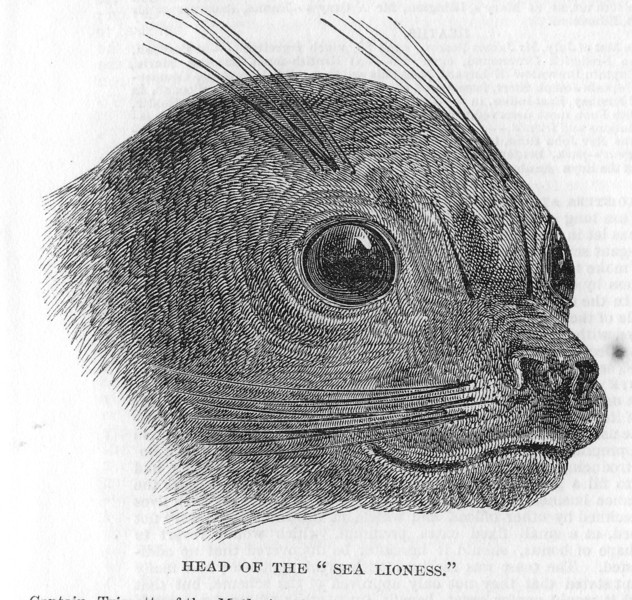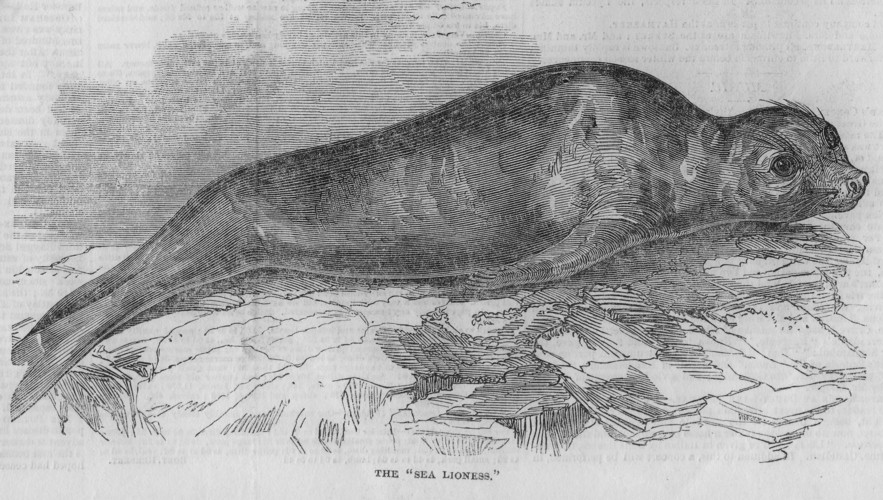A number of species of the Seal have been confounded under the name of "Sea Bear ;" and there have been several honoured with the name of "Sea Lion." One of the latter was brought to this country last week, and exhibited at the Cosmorama-rooms, Regent-street. This specimen was captured in latitude 70o south, upon an iceberg near the Crozet Islands, whence it was taken to the Cape of Good Hope, where it was exhibited several months, and thence it was brought to our metropolis. It differed from the common seal, in its broad flat head, and blunt muzzle, in which respects it resembled the "Sea Lion" of Forster (Leo marinus, Buffon). The skull is of very peculiar form; but the chief character is presented by the teeth of these there are only four conical cutting teeth in each jaw; these are far apart, and much resemble the canine teeth. The molar teeth, or grinders, are small, with large simple cylindrical roots; whereas, in the common Seal, the roots are divided.

Captain Triscott, of the Mathesis, who brought this specimen to England, described it as good-tempered, and displaying considerable intelligence in the recognition of persons. At the Cosmorama Rooms it was kept in a tank of seawater, beneath which it occasionally dived; but more frequently it rested its head upon the edge of the tank, with the whole body nearly out of water. The poor creature was, evidently, far from vigorous; and, after being exhibited three or four days, it died, on Monday last. It was fed upon fish, and the blood of animals, which it appeared to be very fond of. The surface of she body was covered, with smooth black hair, of a brownish tint. One of the Illustrations shows the general conformation of the animal: its fore-paws resemble human hands, but have longer nails, not claws. In the other Engraving is shown the head, with long whiskers, and large, round, bright eyes.
